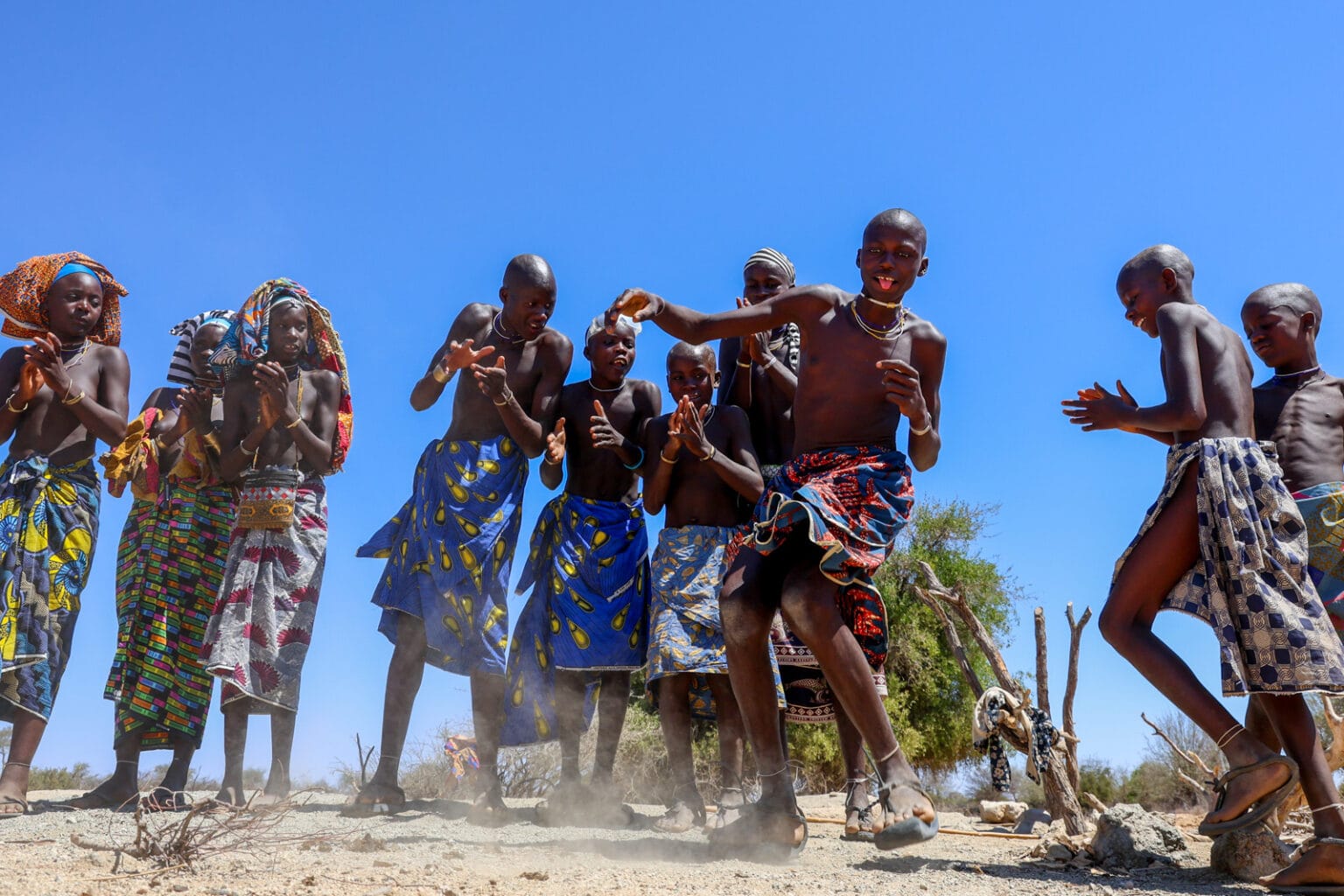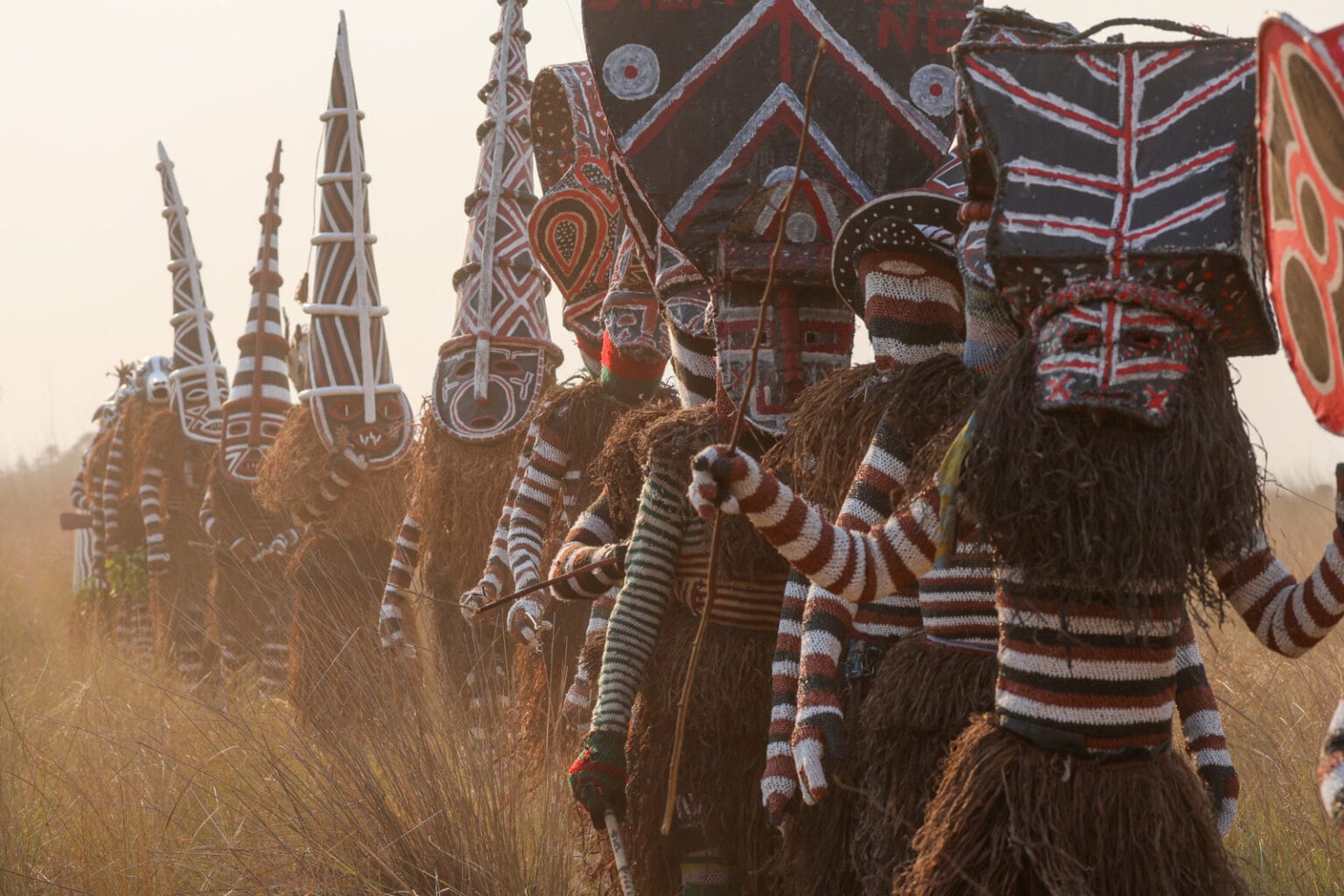The Traditional Kulamba Ceremony is the most important cultural event for the Chewa people of Malawi, Mozambique and Zambia, taking place annually on the last Saturday in August in Katete, eastern Zambia. Thousands upon thousands of people gather at this huge event, creating a truly impressive atmosphere of tradition and festivity. During the ceremony, honours are bestowed and gifts are presented to the king of the Chewa people.
I would like to express my gratitude to Laurel Birch of Aguilar for her impressive work documenting the Nyau society. Personally, it is one of the best documents I have ever read on African ceremonies. From this impressive study, I have copied some paragraphs that perfectly explain the images and what they represent in Chewa culture, Kulamba, and the Nyau initiation society.
Source text for the following paragraphs: Inscribing the Mask: Nyau Masks, Ritual and Performance Among the Chewa of Central Malawi / Laurel Birch de Aguilar
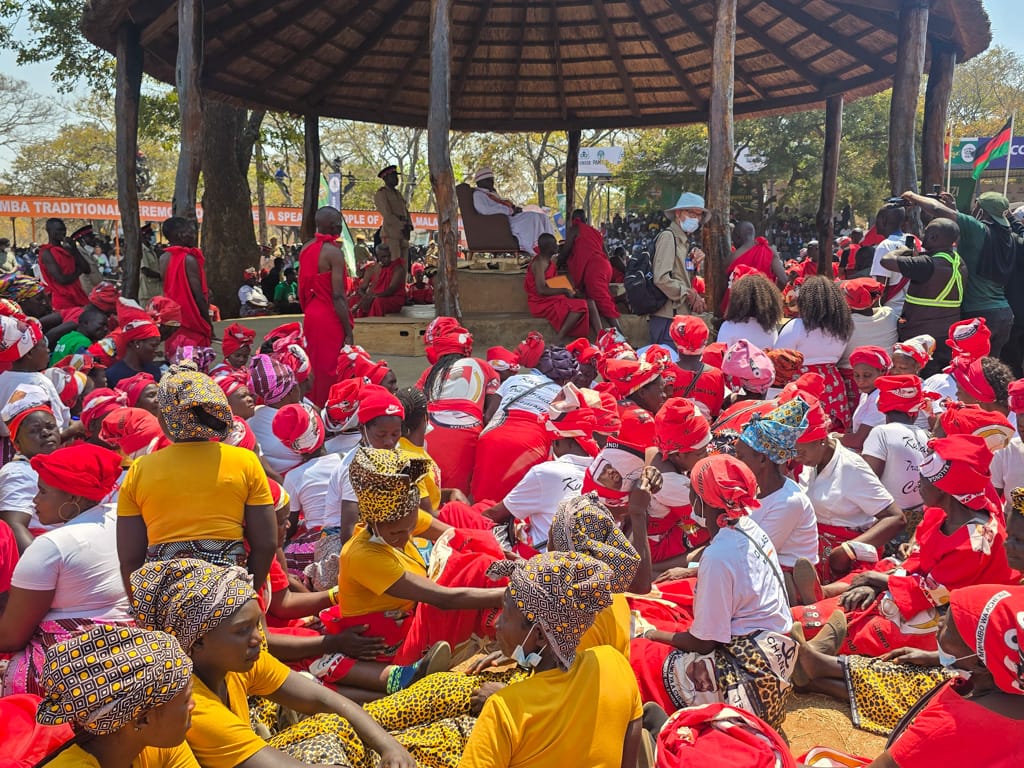
To give you an idea of the scale of this traditional ceremony, Kulamba usually attracts the three presidents of the three countries, who arrive by helicopter. It also attracts traditional rulers from 137 chiefdoms in Malawi, 33 in Mozambique and 42 in Zambia, as well as hundreds of thousands of people from those countries.
Chewa culture has been recognised as Intangible Cultural Heritage by UNESCO since 2008, and we can assure you that it is very much alive.

Visit the Kulamba Traditional Ceremony in Zambia
Before the big Kulamba ceremony day, which usually takes place on the last Saturday in August, there are many smaller ceremonies held by the participating groups from the three countries.
In the late afternoon and evening, we watched frenetic ritual dances featuring the Nyau. On weekdays, these take place away from the authorities and the large crowds that gather on Saturdays.
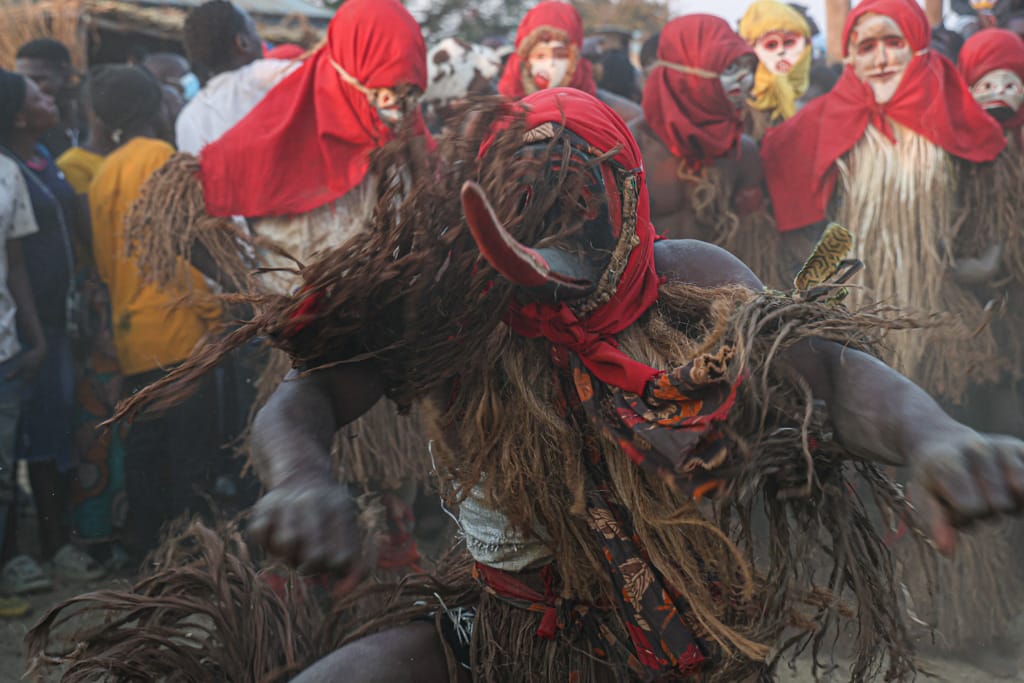
The Chewa people and their culture
The Chewa people are found in Zambia, Malawi and Mozambique. These countries share borders and have a common traditional culture, which is still very well preserved today. Although the culture is rich and varied, we focus on the Nyau dances (gule wamkulu), perhaps the most important of all.
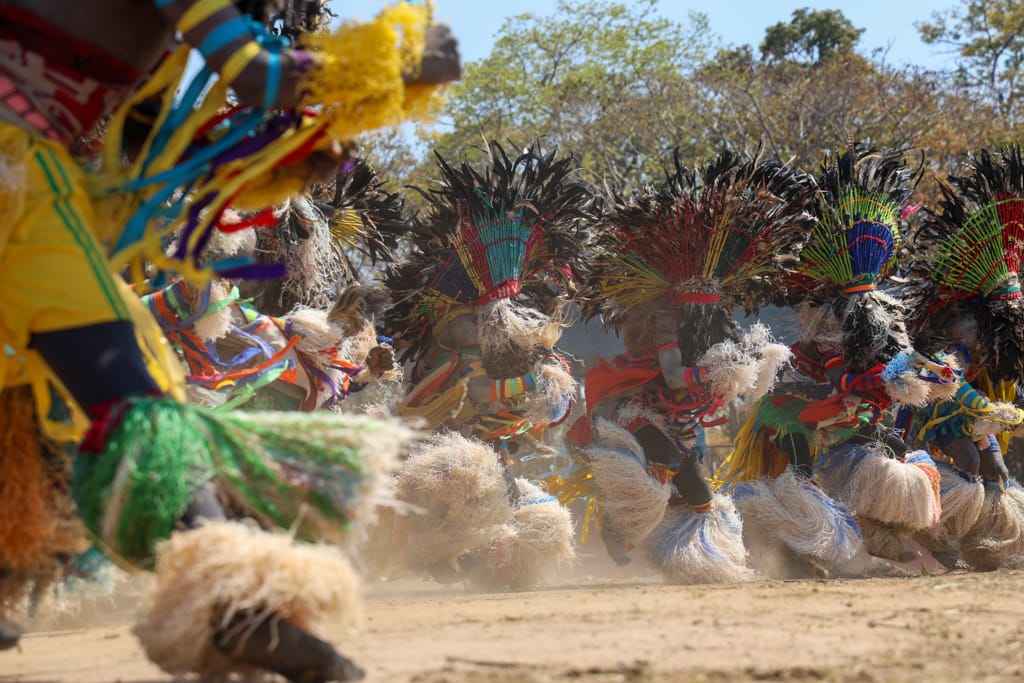
As Bernadette Zulu from Katete Secondary School points out in her study: “Ceremonies are an effective way of safeguarding the country’s heritage and teaching good manners and values to young people (UNESCO, 2005). At the heart of these ceremonies are traditional leaders, chiefs or kings, who are powerful partners in enhancing national development and uniting the country. In most cases, traditional ceremonies can be used to promote moral values, attitudes and discipline, both at home and at school.”
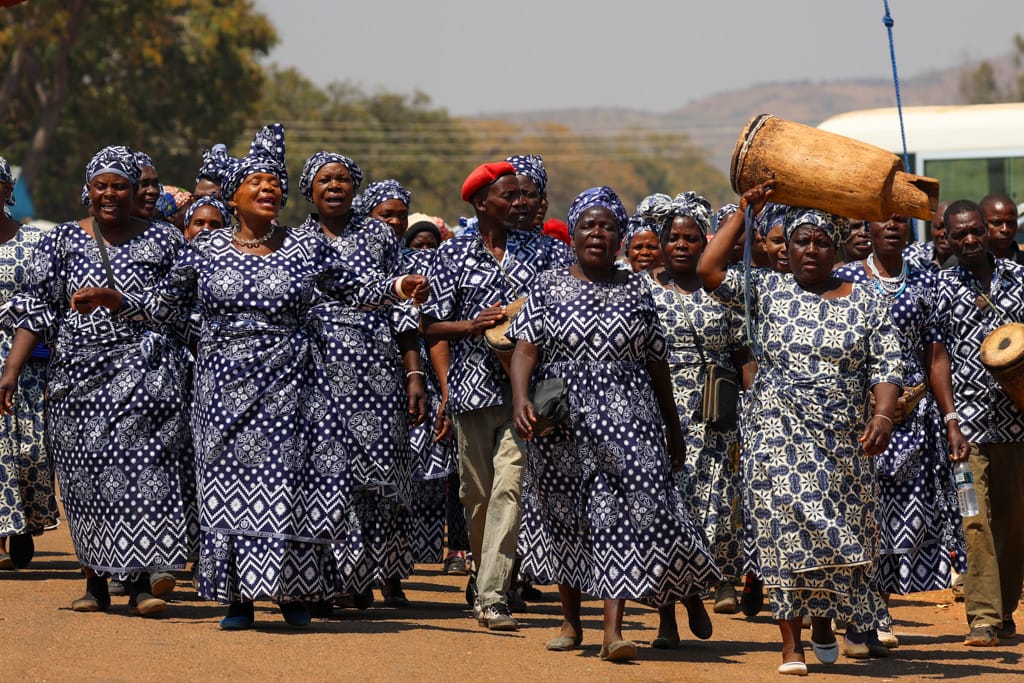
The Nyau initiates and the first missionaries
The earliest documentation of Nyau mask performances and descriptions of the masks comes from the writings of missionaries in Magomero. The masks were witnessed by early missionaries, who recorded the 1862 event in their diaries. The missionaries were present at a funeral on 14 April during which they made the following observations: “the Nyau dancers appeared from the riverbed and ran wildly through the village dancing”. “They wore elaborate masks symbolising the unity of the world of humans, animals and spirits”.
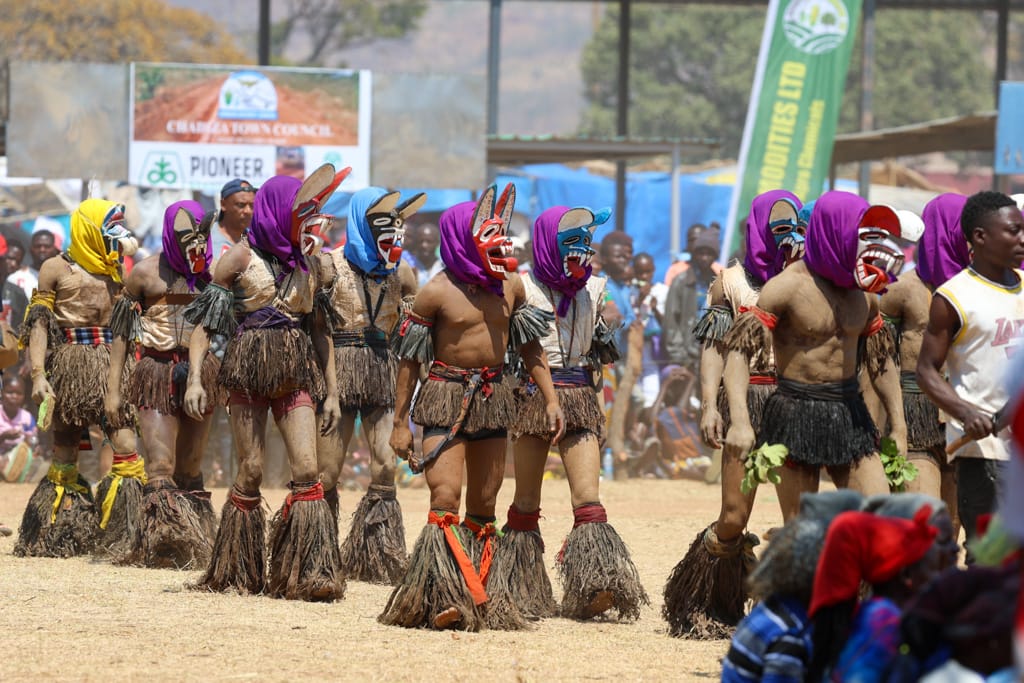
A missionary, Lovell Procter, described the Nyau mask as “a formidable-looking object that came… to dance with its accompanying spirit”. It is probably a representation of the current form of the deceased.
These early sightings by missionaries indicate a tradition of masks that undoubtedly predates the arrival of European missions in the 1860s, of which these writings were some of the first.
The masked dancers were seen as “a powerful and terrifying demonstration of the strength of the Mang’anja religion”, and were described as a force that compelled the people to choose between the foreign missions and the Nyau.
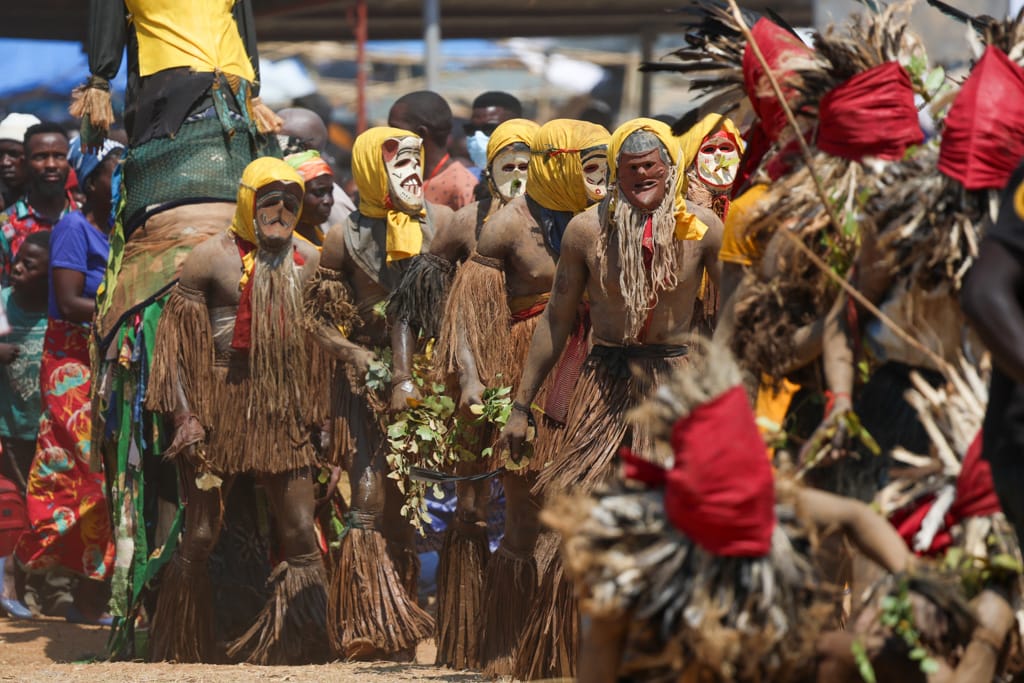
The secret society of the Nyau
Those who make the masks, wear them, and organise events for the village community are initiated members of the Nyau society. Men and women have separate initiations, but it is the men, with very rare exceptions, who make the masks and perform with them at community events.

As we have seen, the male members of Nyau maintain strict secrecy about the masks in front of women and outsiders, with the exception of certain older women who have been entrusted with knowledge of both male and female initiations. Women maintain secrecy about their own initiation in front of initiated men and in front of all non-initiates.

There is no centralised hierarchy of Nyau. There are Nyau leaders in each village where these initiations are practised, who generally come from other villages and share the same knowledge of the Nyau initiation. Since men often move from their own villages to others, they have developed passwords, signs and gestures recognised by all other initiated men in the region, indicating that they have been properly initiated.
Initiations take place in the local village, although the best teachers may come from other villages and initiates may also come from other villages that are not performing initiations that year.
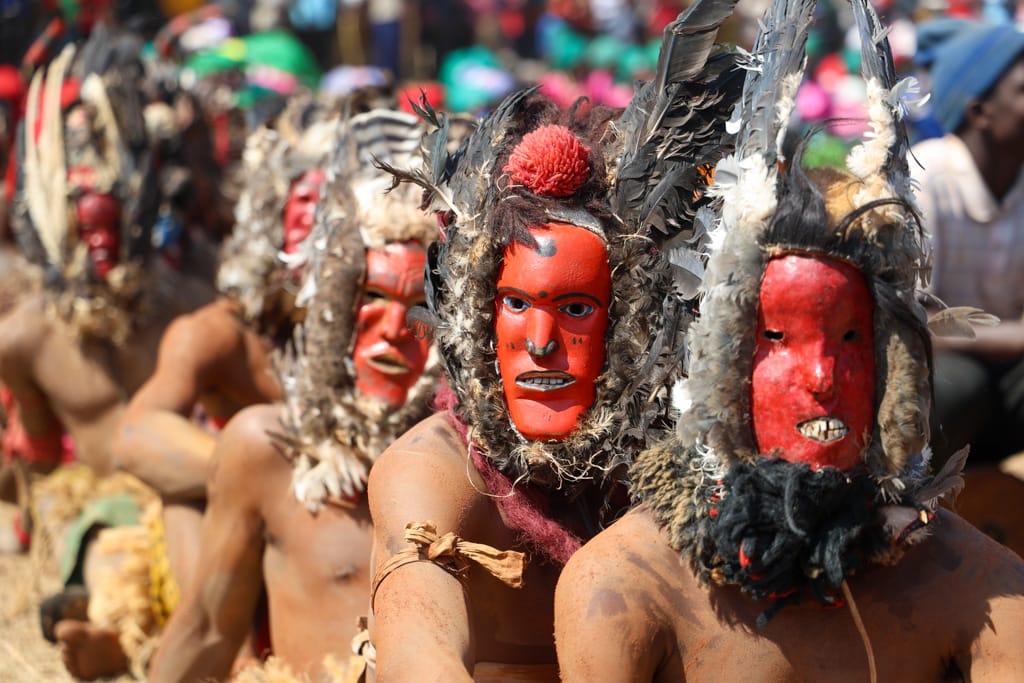
The ritual dance of the Gule Wamkulu during Kulamba
Gule Wamkulu dates back to the great Chewa empire of the 17th century. Despite the efforts of Christian missionaries to abolish this custom, it has managed to survive under British colonial rule by adopting some aspects of Christianity.
Gule Wamkulu was both a secret cult and a ritual dance practised by the Chewa people. It was danced only by members of the Nyau brotherhood, a secret society of initiated men, as explained above.
Members of the Nyau secret society are still responsible for the initiation of young men into adulthood and for the performance of the Gule Wamkulu dance at the end of the initiation process, celebrating the integration of young men into adult society.

Gule Wamkulu takes place in the season following the July harvest, but it can also be seen at weddings, funerals, and on the occasion of the inauguration, death of a chief, or the Kulamba Traditional Ceremony.
On these occasions, Nyau dancers wear costumes and masks made of wood and straw. Their masks represent a wide variety of characters, such as wild animals, spirits of the dead, slave traders, as well as more recent characters such as the “Honda” or the “helicopter”.

Each of these characters plays the role of someone, often evil, who illustrates a form of misconduct, which serves to teach the audience about moral and social values.
These characters perform dances with extraordinary energy, entertaining and frightening the audience as representatives of the spirit world and the dead.

The world of initiation masks and spirits
The masks themselves are described as spirits (mzimu), specifically as spirits of the deceased and ancestors.
The masked performers are mzimu, meaning ancestors, the deceased; and some represent specific individuals who have passed away, relatives of community members and, in most cases, elderly people. The “ghosts” of these elderly people become more powerful ancestral spirits, a transition that is commemorated with a memorial dance.
The masked dancers are all deceased individuals who leave the cemetery to enter the bwalo, the ritual space, for the dance performance.
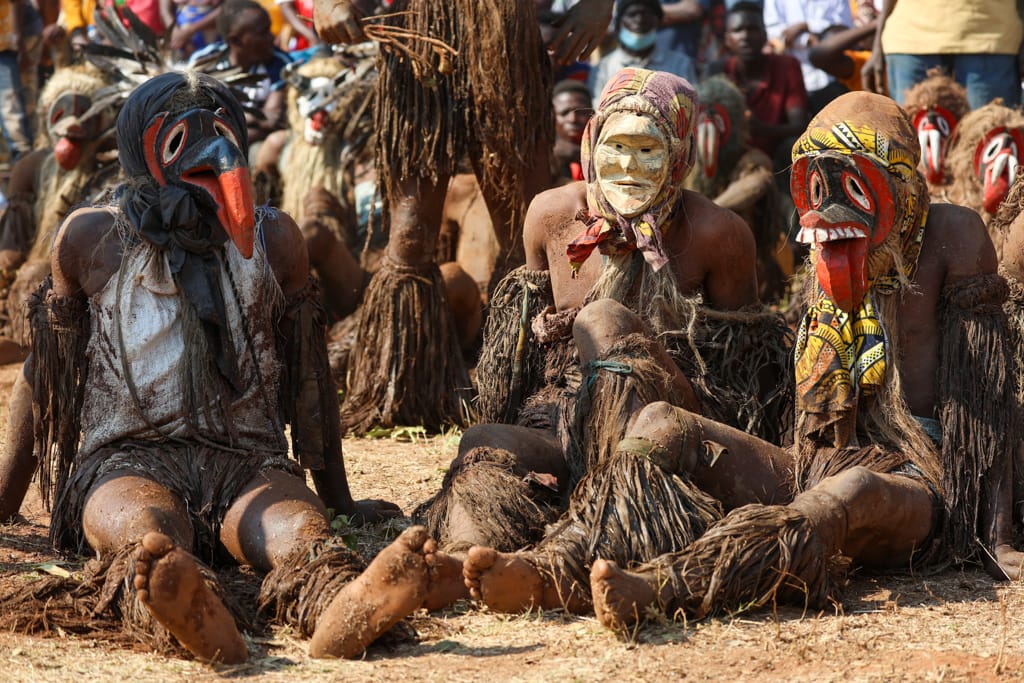
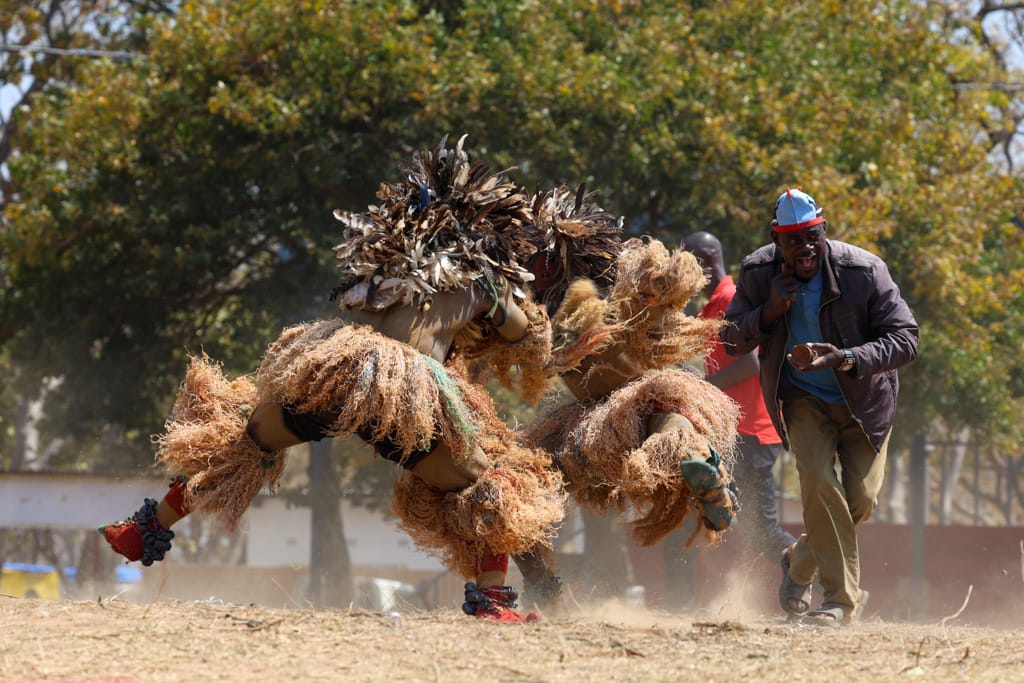
In this sense, the masks also refer to the dead, and are considered to be what they might actually look like. The body is covered with ash, transforming the appearance of the skin. The costumes are rags of cloth, animal skins, sisal ropes, frayed fertiliser sacks and feathers.
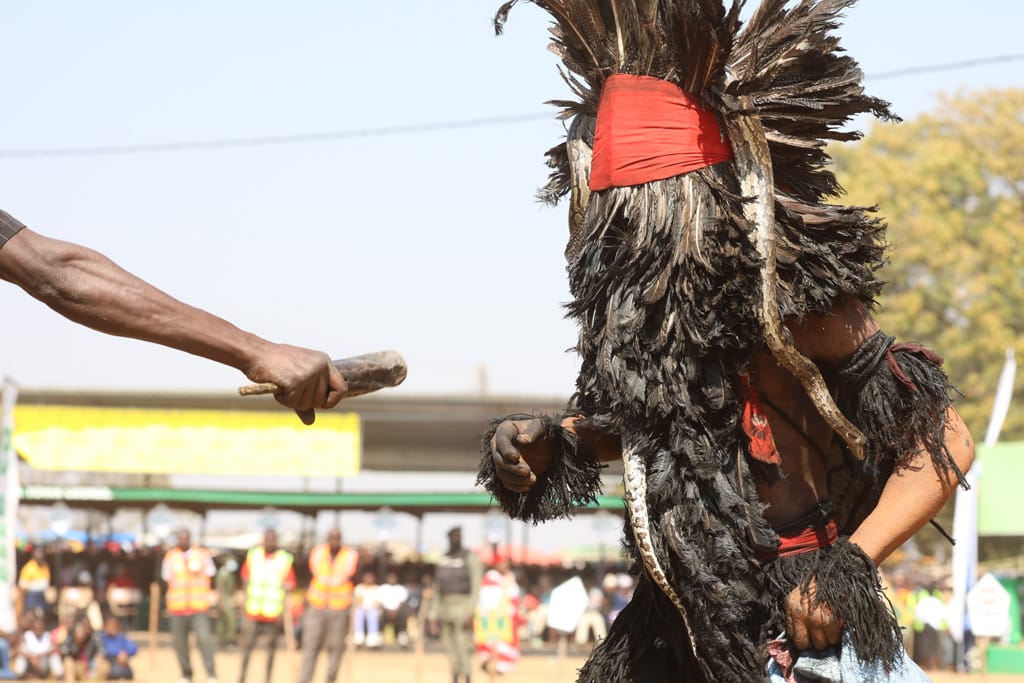
The appearance is considered otherworldly, not from the world of the living, but from the world of the dead. Another interpretation of the masks given by both members of the Nyau and people outside the Nyau is that the masked dancers are like wild animals, fearsome or strange creatures from the graveyard.
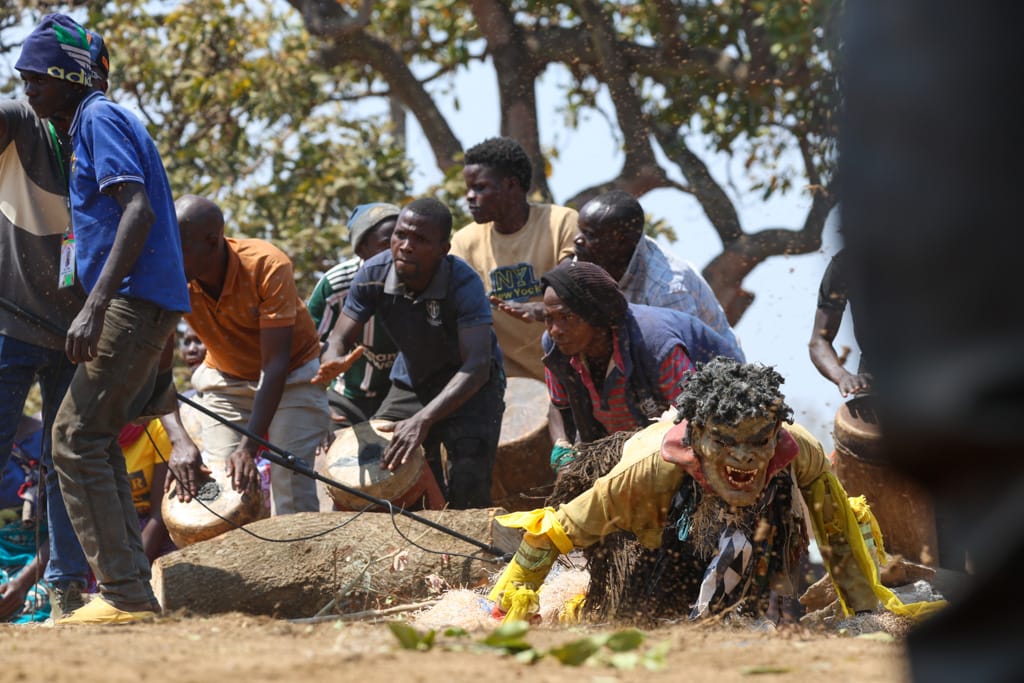
Although Kulamba may seem like a kind of carnival, it is nothing of the sort. Even the masks that most resemble Halloween costumes have important meanings and are sacred.
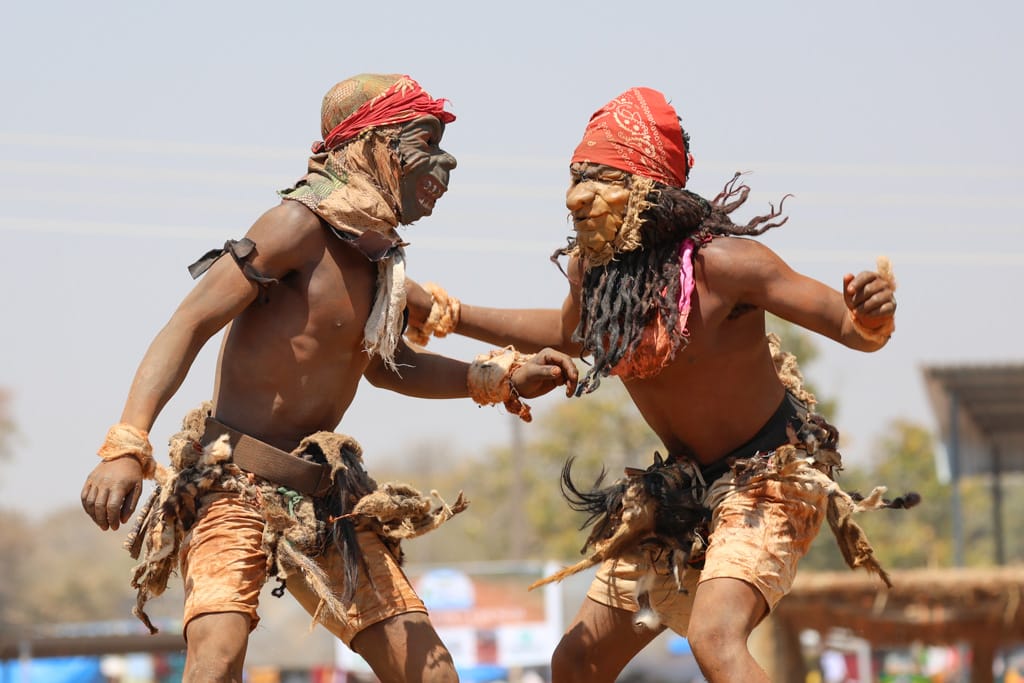
Nyau and masks are associated with secret medicines, nocturnal activities, secret knowledge, and matters of the dead. Nyau members refer to these associations and also claim that they place medicines in their masks to protect themselves against jealousy and witchcraft, and spit into the mask before putting it on as a preventive measure against evil spirits.
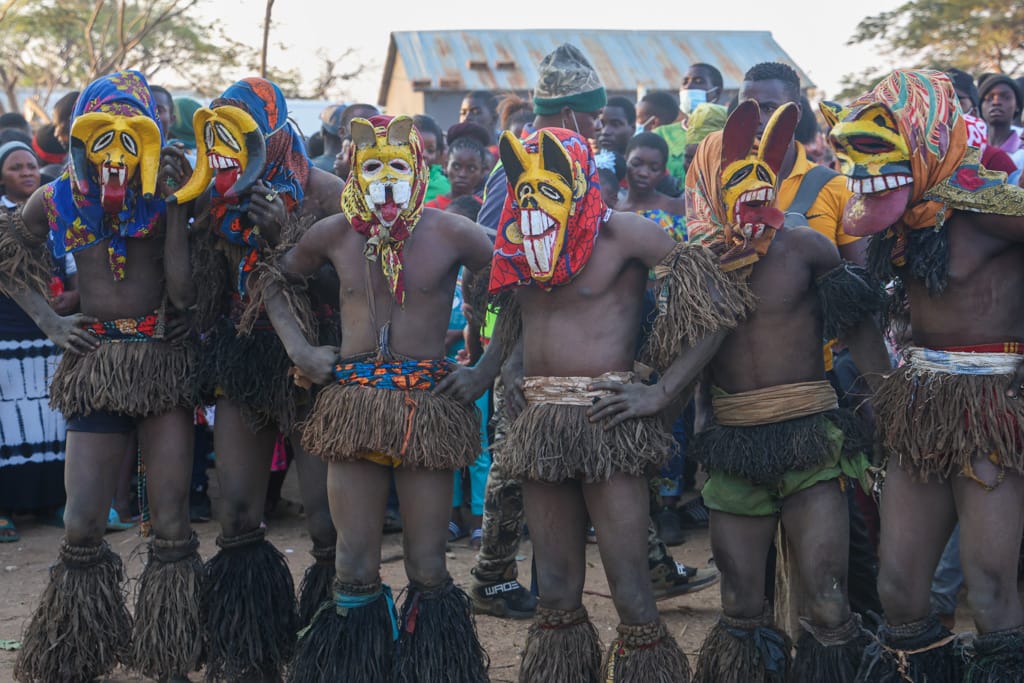
Kulamaba Saturday
Thousands of people, presidents from three countries, ministers and other tribal chiefs gather on the last Saturday in August to pay homage to Chief Chewa. It is a ceremony of enormous proportions, with hundreds of masks, hundreds of percussionists and several hundred guests.

At the centre of attention is the chief of the Chewa, King Kalonga Gawa Undi, who is literally placed on an altar decorated with enormous ivory tusks and leopard skins. Upon entering, he is greeted by a veritable sea of people, walking through the stands where 30,000 attendees applaud and sing incessantly.
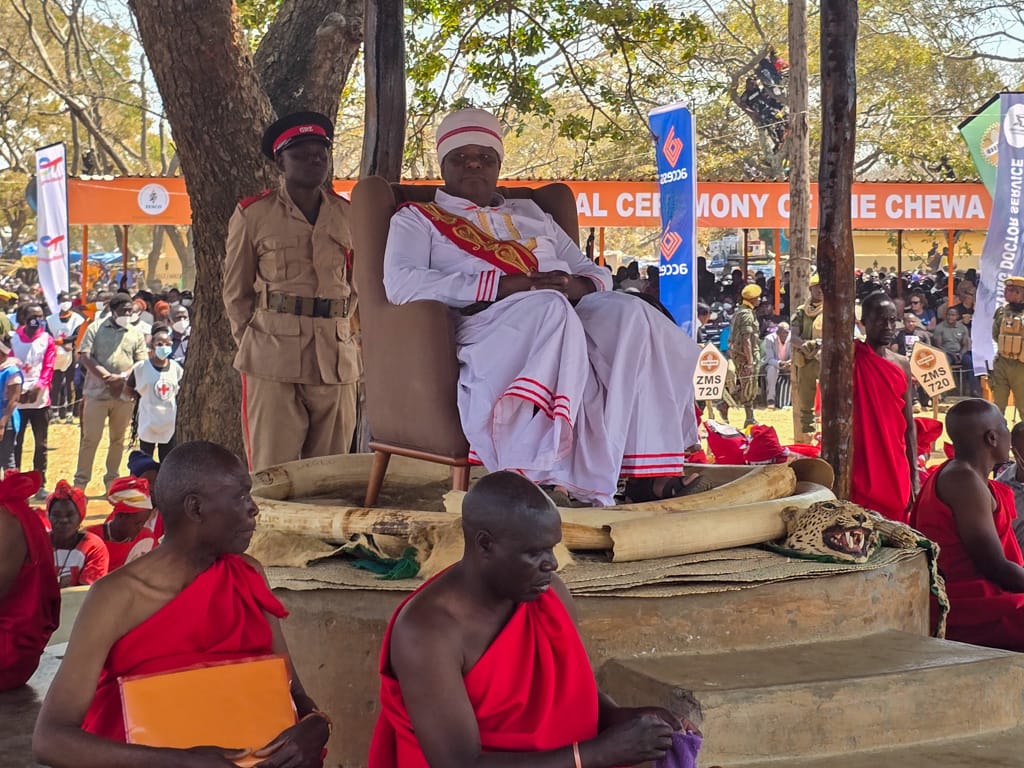
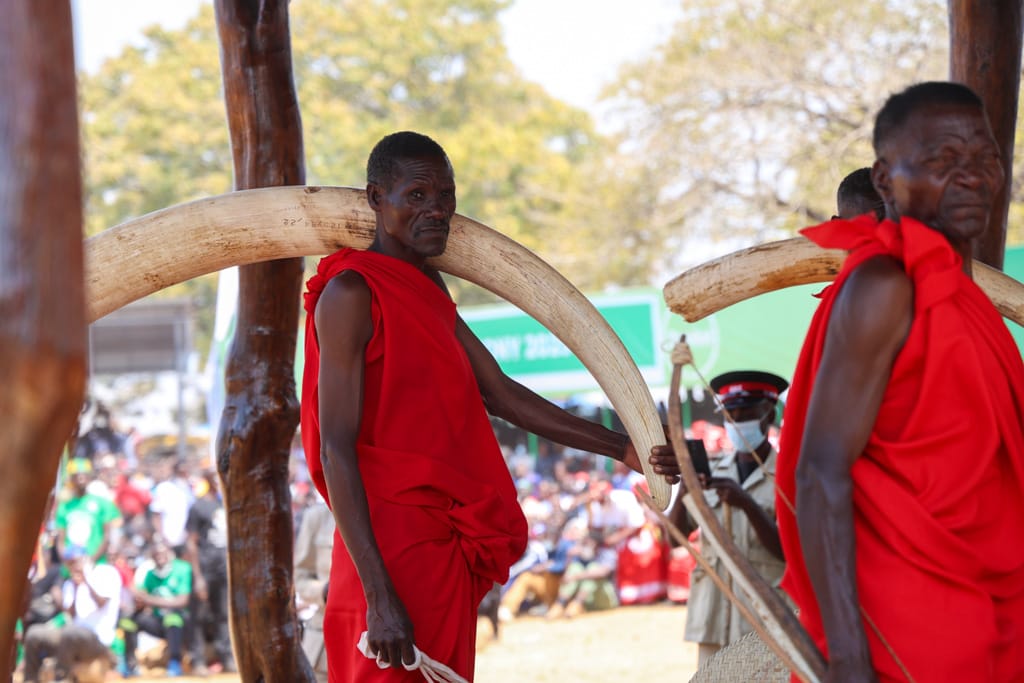
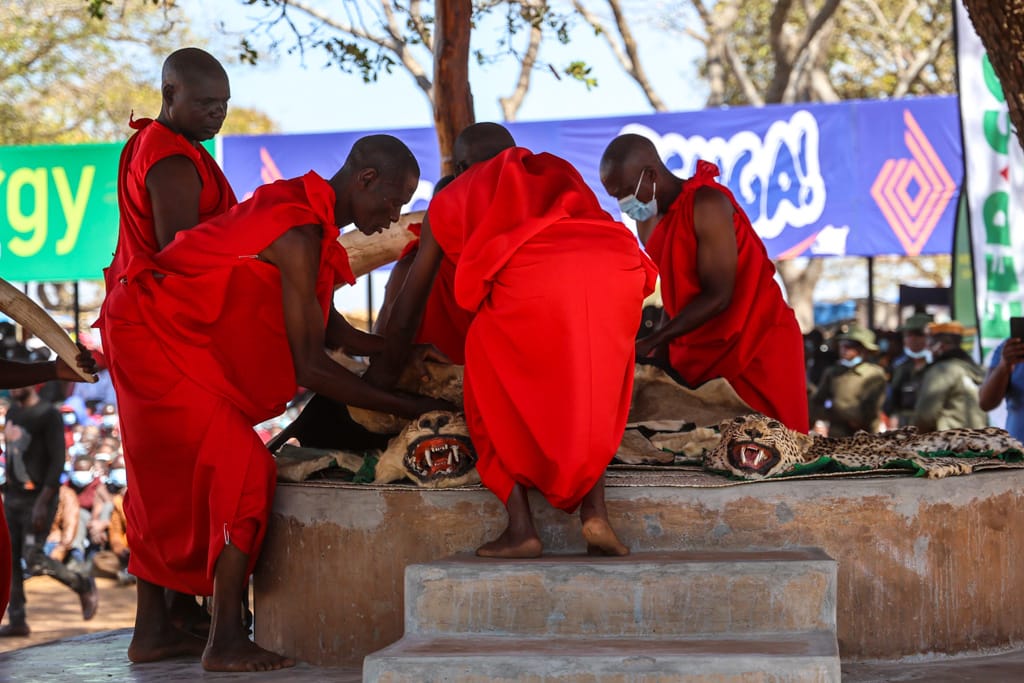
Don’t miss our account of Zambia’s Likumbi Lya Mize ceremony, another fascinating example of traditional culture. If you are interested in travelling to Zambia to attend these ceremonies, please contact us at info@kumakonda.com.




